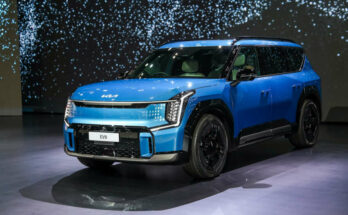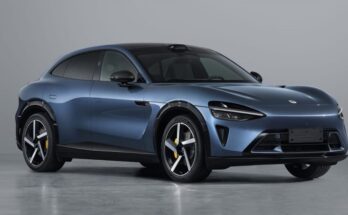The basic purpose of an automobile is to transport people, or goods from one place to another. However depending on their use, automobiles are classified into various body types, each different from another catering to specific consumer needs.
Car body types is a broad subject to deal with and the given names, depending upon their design, utility, technology used and customization may also vary from country to country. For common people it is confusing to decide the car type and in which segment it falls. So, to help you out, here’s an article on the classification of cars on the basis of their body types, most commonly available in our country.
Sedan:
A sedan is a passenger car in a three-box configuration with A, B & C-pillars. The passenger compartment of sedans features two rows of seats and adequate passenger space in the rear compartment for adult passengers. The primary purpose of the sedan is to transport people and their baggage on ordinary roads. They have a central B-pillar that supports the roof and come in 4-door as well as 2-door configurations.
 It’s the most recognizable shape for a car, and even though the popularity of crossovers is rapidly on the rise, still sedans are considered the most popular body type. Generally, when it comes to driving pleasure, sedans simply offer more than any other body type. They are economical and practical, plus there is also a distinct advantage of the safety and security of having a proper, lockable boot.
It’s the most recognizable shape for a car, and even though the popularity of crossovers is rapidly on the rise, still sedans are considered the most popular body type. Generally, when it comes to driving pleasure, sedans simply offer more than any other body type. They are economical and practical, plus there is also a distinct advantage of the safety and security of having a proper, lockable boot.
The relatively low ride height keeps the weight closer to the ground and this low center of gravity means that cornering, swerving and changing direction don’t upset a sedan’s balance as badly as they do on an SUV.
Examples of sedans in our market include Toyota Corolla, Honda City, Nissan Sunny and Suzuki Ciaz etc.
Hatchback:
A hatchback is a car body configuration with a rear door that swings upward to provide access to a cargo area. Hatchbacks may feature fold-down second-row seating, where the interior can be flexibly reconfigured to prioritize passenger vs. cargo volume. Hatchbacks may feature two- or three-box design.
Hatchbacks have their own set of advantages, the foremost is the space. Modern hatchbacks are quite spacious from inside but are relatively shorter in dimensions on the outside, making it easy to maneuver them in congested traffic situations and can be easily parked in tight spaces.
They are generally cheaper than any other car type, have relatively smaller engines (in most cases), and are economical too, thus easier to run and maintain as well. Rear seats in a hatchback can be fold and tumble forward to maximize luggage space.
Examples of hatchback include Suzuki Swift, Suzuki Alto, FAW V2 and Daihatsu Mira etc.
Station Wagon:
A station wagon, also called an estate car, is a body-style variant of a sedan with its roof extended rearward over a shared passenger/cargo volume with access at the back via a liftgate/ tailgate, instead of a trunk/boot lid.
The body style transforms a standard three-box design to include an A, B, and C-pillar, as well as a D-pillar. Station wagons can flexibly reconfigure their interior volume via fold-down rear seats to prioritize either passenger or cargo volume.
They may look like larger hatchbacks but differ in terms of technical aspects. Although both station wagons and hatchbacks typically share a two-box design configuration, with one shared, flexible interior volume for passengers and cargo and a rear door for cargo access, they offer variable distinctions, such as:
- Station wagons usually have windows aside the cargo volume. In a station wagon, roof more likely extends to the very rearmost of the vehicle, enclosing a full-height cargo volume. As opposed to hatchback roof that rakes down steeply behind the C-Pillar, prioritizing style over interior volume, with shorter rear overhang and with smaller or no windows aside the cargo volume.
- A station wagon may include reconfigured rear suspension for additional load capacity, the hatchback doesn’t offer a reconfigured suspension for carrying cargo.
- Hatchbacks typically feature a top-hinged liftgate for cargo access, whereas Station wagons can employ numerous tailgate configurations.
Examples of station wagons are Toyota Fielder, Nissan Wingroad, Toyota Probox and Honda Airwave.
SUV
SUV (Sport Utility Vehicles) are typically a kind of station wagon/ estate car with off-road vehicle features such as high ground clearance and ruggedness and four-wheel drive. Many SUVs are built on a light-truck chassis but operated as a family vehicle, and though designed to be used on rougher surfaces, are most commonly used within city or highways.
SUVs are typically of a two-box design, with the engine compartment in front, and a combined reconfigurable passenger and cargo compartment behind it, instead of having a separate trunk.
SUVs typically have high ground clearance, larger wheels, a tall body and upright seating. Though this can make them more likely to roll over (in event of high speed cornering) due to their high center of gravity. Bodies of SUVs have recently become more aerodynamic, but the sheer size and weight keeps their fuel economy poor. Modern full-sized SUVs often offer features such as three-row seating, making them an effective replacement of full-sized station wagons and minivans.
Depending on their size the SUVs can further be classified into mini SUVs, compact SUVs, mid-size SUVs and full-size SUVs.
SUVs overtook lower medium segment cars to become the world’s largest automotive segment in 2015, accounting for nearly 23% of global light vehicle sales ( as of 2015), or 37% of the world’s passenger car market (2017).
Examples include Toyota Fortuner, Toyota Surf, Honda CR-V and Mitsubishi Pajero.
Crossover
A crossover or crossover utility vehicle (CUV) is a vehicle built on a unibody car platform combining features of a sport utility vehicle (SUV) with those of a passenger vehicle, especially a station wagon or hatchback.
The term crossover emerged as a marketing tool and many consumers cannot tell the difference between an SUV and a crossover. In simple terms, crossovers can be defined as ‘wagons that look like sport utility vehicles, but ride like cars’.
The crossover combines SUV features such as a tall interior, high seating, high ground-clearance, and in some cases AWD – with those of an automobile – including independent rear suspension, car-like handling, lighter weight and better fuel economy than truck-based vehicles.
A crossover may borrow features from a station wagon or hatchback, such as the two-box design of a shared passenger and cargo volume with rear access via a third or fifth door, most commonly a liftgate.
Crossovers are typically designed for only light off-road capability, and are offered with front wheel drive or all-wheel drive configurations.
Examples of crossovers in our market are Honda HR-V/ Vezel, Suzuki Vitara and Toyota C-HR.
MPV
MPV (multi-purpose vehicle) or minivans are generally high-roof vehicles with a flexible interior layout. MPV combines a high-roof, five-door, one- or two-box hatchback body configuration with a mid-size platform, engine and mechanicals; car-like handling and fuel economy; unibody construction and greater height than sedan or station wagon counterparts.
The design offers higher seating, two or three rows of seating, easy passenger and cargo access with sliding wide-opening rear doors and large rear hatch, and a re-configurable interior volume with seats that recline, slide, tumble, fold flat or allow easy removal—enabling users to reprioritize passenger and cargo volumes.
In recent years the MPV designs are greatly inspired by crossover & SUVs, making them appear rugged and sporty as opposed to a typical van-like image from the past. This has made consumers to confuse between MPVs and crossovers or SUVs. Examples are Honda BR-V, Toyota Avanza and Suzuki APV.
Microvan
A microvan is a minivan that fits into Japanese kei car classification, being smaller than an MPV. These microvans usually have two swinging front doors, two sliding rear doors and a large tailgate. Seating can vary from two to nine; these seats are usually very thin and vertical to optimise room.
The side windows in commercial-only versions of microvans are replaced by metallic panels and sometimes call also as ‘blind van’. Some models also feature pick-up variants with one or two seat rows. Engines usually have displacements under 1.0 liter; in Japanese domestic market, microvans have a limit of 660cc.
Common examples are Suzuki Bolan, Nissan Clipper & Daihatsu Hi-jet etc.
Pickup
A pickup is a light duty truck having an enclosed cab and an open cargo area with low sides and tailgate. Once considered as a work tool with minimum comfort, the pickups in recent times (particularly the double cabin versions) are purchased primarily for lifestyle reasons.
Examples of pickups are Toyota Hilux, Toyota Tundra, Mitsubishi Triton, Isuzu D-Max etc.

A computer animation professional with over 23 years of industry experience having served in leading organizations, TV channels & production facilities in Pakistan. An avid car enthusiast and petrolhead with an affection to deliver quality content to help shape opinions. Formerly written for PakWheels as well as major publications including Dawn. Founder of CarSpiritPK.com












